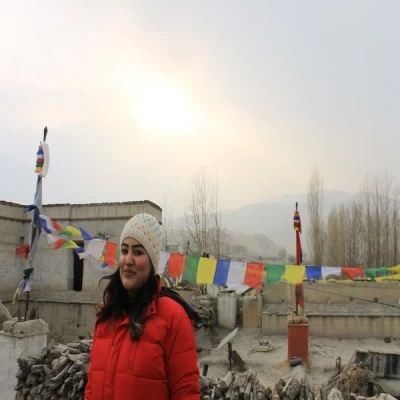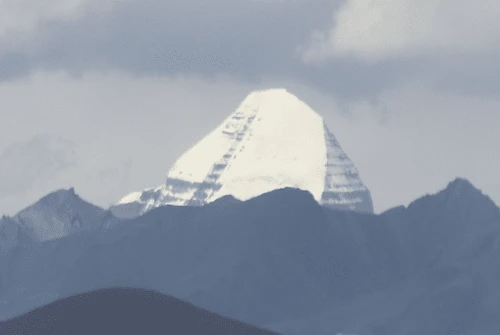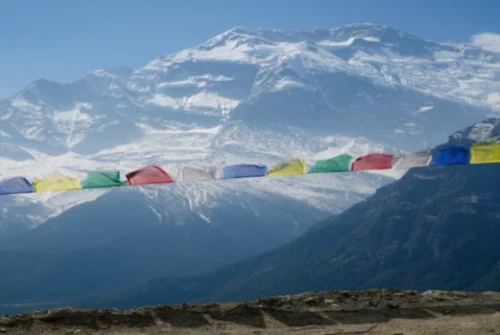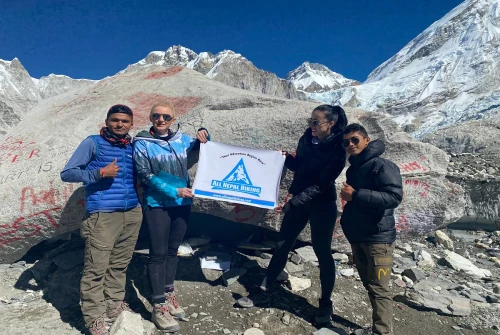Overview
The Everest Base Camp Trek in October is one of the most rewarding adventures a trekker can experience. Known as the peak trekking season in Nepal, October offers unmatched conditions that combine breathtaking scenery, perfect weather, and rich cultural encounters. As the monsoon rains clear and the skies open up, the Himalayas reveal their true grandeur, making October the most sought-after month to embark on this once-in-a-lifetime journey.
October falls within the autumn season in Nepal, widely regarded as the best trekking period of the year. With moderate daytime temperatures, crisp mornings, and stable weather, trekkers can walk comfortably while being treated to uninterrupted mountain vistas. The iconic peaks, Mount Everest, Lhotse, Nuptse, Ama Dablam, and Thamserku, stand tall and unobstructed, offering some of the clearest views possible.
Beyond the landscapes, October also immerses trekkers in Nepal’s festive spirit. Celebrations like Dashain and Tihar, two of the biggest Hindu festivals, often take place during this month, allowing visitors to witness cultural traditions that add even more depth to the journey. At the same time, bustling teahouses along the trail come alive with fellow adventurers from around the globe, fostering a sense of camaraderie and shared purpose.
For those seeking both adventure and cultural enrichment, October strikes the perfect balance. The trails are busy, yes, but with the vibrancy of enthusiastic trekkers, the warmth of local hospitality, and the unmatched clarity of Himalayan skies, the Everest Base Camp Trek in October stands as a truly unforgettable experience.
Why October is the Best Time for the Everest Base Camp Trek?
October is considered the golden month for trekking in Nepal, and for good reason. The weather is stable, rainfall is minimal, and visibility is at its peak. Unlike summer, when monsoons obscure mountain views, or winter, when freezing temperatures challenge trekkers, October strikes a comfortable middle ground.
Daytime temperatures average between 12°C to 16°C (54°F to 61°F), making walking enjoyable without the extreme heat or cold. Nights are cooler, ranging from -5°C to 5°C (23°F to 41°F), but still manageable with proper trekking gear. The crisp air enhances visibility, allowing trekkers to witness dramatic sunrises and sunsets over the Himalayan range.
Additionally, October coincides with the harvest season in the Khumbu region. Villages are vibrant, fields are golden, and locals are in a festive mood. This creates a unique cultural layer to the trek, where trekkers don’t just walk through the mountains, they experience the life, traditions, and celebrations of the people who call these high-altitude regions home.
Highlights of the Everest Base Camp Trek in October
1. Breathtaking Himalayan Views
October is famous for its uninterrupted panoramas of the Himalayas. From the moment we land in Lukla and begin the trek, snowcapped peaks dominate the skyline. The blue skies provide a perfect backdrop, while the golden glow of the autumn sun illuminates Everest, Ama Dablam, and other giants with a clarity that photographers dream of. The most spectacular viewpoints, Kala Patthar, Tengboche Monastery, and Namche Bazaar, offer unforgettable moments of beauty. Standing beneath the world’s tallest peak with pristine skies overhead is an image that stays with trekkers forever.
2. Perfect Trail Conditions
The monsoon rains of summer leave the landscapes fresh, clean, and lush, while the drier conditions of October keep the trails dust-free and comfortable. River crossings are easier, landslides are rare, and the paths are well-defined thanks to the consistent flow of trekkers. This balance of freshness and stability makes October trails some of the most enjoyable trekking conditions of the year.
3. Cultural Encounters
October is when Nepalese festivals like Dashain and Tihar brighten villages with vibrant colors, family gatherings, and traditional rituals. Along the trek, we often see prayer flags, Mani walls, and monasteries buzzing with activity.
Interacting with Sherpa communities during this festive season allows us to understand their unique way of life, deeply rooted in both Buddhism and nature. These cultural experiences transform the Everest Base Camp trek into more than just a physical journey; it becomes a cultural exploration.
4. Teahouse Comfort
October’s popularity means teahouses are fully operational, offering cozy beds, warm meals, and lively atmospheres. Sharing stories with fellow trekkers over a hot cup of tea in the common dining hall becomes part of the adventure itself. From hearty dal bhat to warm apple pies in Namche, the food in October is fresh and plentiful, fueling us for the long days on the trail.
Why October Is Considered the Best Month for the Everest Base Camp Trek
October is widely celebrated as the best time of the year to trek to Everest Base Camp. After the heavy summer monsoon, the skies open up to some of the clearest mountain views you can ever witness. The air feels crisp, fresh, and stable, allowing us to enjoy long trekking days without the fear of rain or clouds hiding the peaks. Walking through the Khumbu Valley in October is like stepping into a world where every view feels like a postcard; Mount Everest, Lhotse, Ama Dablam, and countless other snow-capped giants appear sharp against the deep blue sky.
What also makes October special is the temperature balance. Days are pleasantly warm, especially at lower elevations like Lukla, Phakding, and Namche Bazaar, where average daytime temperatures range between 12°C to 16°C (54°F to 61°F). Higher up, the weather gets cooler but is still very manageable with the right layers. Nights are chilly but not as freezing as November, making teahouse stays more comfortable. It’s a month when you can truly enjoy both the trek and the natural beauty without extreme cold or rainfall.
Adding to this, October coincides with Nepal’s biggest festivals, Dashain and Tihar. Trekking during this time means not only experiencing the natural beauty of the Himalayas but also getting a glimpse into the joyous celebrations of Nepali culture. Villages along the way often decorate their homes, locals wear new clothes, and the atmosphere feels more festive. This perfect blend of weather, visibility, and cultural richness makes October the most sought-after month for the Everest Base Camp trek.
What Are the Challenges of Trekking to Everest Base Camp in October?
Despite being the most popular trekking month, October also brings certain challenges we should be aware of. The biggest one is crowds. Because the weather is ideal, hundreds of trekkers from around the world choose October to begin their journey. This means that popular teahouses in Namche, Dingboche, and Lobuche can fill up quickly. Without prior booking, we may sometimes have to compromise on accommodation choices, especially in higher villages where options are limited.
Another challenge lies in the busy trails. Unlike November, when the paths feel quieter, October treks often involve meeting fellow hikers at every turn. While this creates a lively, international trekking community, it can also make some stretches of the journey less peaceful. Popular viewpoints like Kala Patthar may feel crowded during sunrise, and Lukla flights can get booked out weeks in advance.
Lastly, although the weather is stable, altitude sickness remains the greatest challenge regardless of the month. Even in October, trekkers face risks of Acute Mountain Sickness (AMS) once they ascend above 3,000 meters. A steady pace, proper hydration, and following acclimatization stops remain as important as ever. The trails may look inviting, but rushing through them without allowing the body to adapt is never safe.
Why Is Acclimatization and Safety Important in October?
Acclimatization is a non-negotiable part of the Everest Base Camp trek, no matter the season. In October, the pleasant weather often encourages trekkers to walk longer distances in a day, but pushing too fast can increase the risk of altitude sickness. Following the standard itinerary, which includes acclimatization stops in Namche Bazaar (3,440 m) and Dingboche (4,410 m), ensures our body adapts properly to the thinner air.
Safety also extends to being prepared for fluctuating temperatures. While days can be warm and sunny, evenings at higher altitudes like Lobuche or Gorakshep still drop close to freezing. Carrying layers, including thermal wear, fleece jackets, and a down jacket, is necessary for comfort and safety. Walking early in the day is often the best strategy since the afternoons can get windy, which makes the air feel much colder.
Finally, October is one of the busiest months for flights to Lukla. Weather delays are rare compared to other months, but the sheer demand for seats means it’s always wise to confirm tickets early. Having a flexible return plan and allowing extra days in Kathmandu ensures we don’t face unnecessary stress if flights get rescheduled. In October, safety is about balancing enjoyment with preparation.
What Is the Weather Like in October for Everest Base Camp?
October provides a near-perfect climate for trekking. At lower elevations like Lukla and Phakding, daytime temperatures average around 12°C to 16°C (54°F to 61°F). In Namche Bazaar, days hover around 10°C to 14°C (50°F to 57°F). Higher up, in places like Lobuche and Gorakshep, daytime temperatures are cooler, between 4°C to 8°C (39°F to 46°F). Nights, however, dip much lower—expect around -2°C to -5°C (28°F to 23°F) at higher camps.
Rainfall in October is almost nonexistent, since the monsoon has already cleared. This means trails are dry, rivers run clear, and the skies remain bright blue most of the time. It’s a month where we hardly need to worry about carrying heavy rain gear, but a good windproof jacket still comes in handy for chilly breezes at higher elevations.
For trekkers who love crisp, clear mornings and star-filled skies at night, October is unmatched. The stable weather allows us to stick to our trekking schedule with confidence, knowing there’s very little chance of disruption from storms or rain.
Why Are the Himalayan Views in October So Breathtaking?
The Himalayan views in October are perhaps the best of the entire year. After the cleansing rains of the monsoon, the skies are completely free from haze, offering some of the sharpest mountain views imaginable. The air feels fresh, and the light is perfect for photography, making every ridge and summit appear dramatically clear.
One of the most unforgettable experiences is watching the sunrise from Kala Patthar (5,545 m). In October, the golden rays illuminate Mount Everest, Nuptse, and Lhotse with striking clarity, painting the peaks in shades of orange and pink. The evenings are equally magical, with sunsets over Ama Dablam and Thamserku leaving trekkers speechless.
For photography enthusiasts, October offers postcard-worthy shots at almost every step of the trail. Whether it’s the vibrant prayer flags in Namche, the dramatic backdrop of Tengboche Monastery, or the icy walls of the Khumbu Glacier, every moment feels worth capturing.
What Are the Accommodations and Food Like in October?
Since October is peak trekking season, almost all teahouses along the EBC trail remain open and fully operational. This ensures we have plenty of options for both accommodation and meals. Teahouses in Namche Bazaar often feel lively, with trekkers from around the world gathering in warm dining halls, sharing stories by the fire.
The rooms are simple but cozy, with twin beds, blankets, and wooden walls. At higher elevations, rooms can get chilly at night, so carrying a four-season sleeping bag is always a smart idea. The demand in October is high, so booking accommodations in advance is highly recommended.
Meals are hearty and nourishing. Staples like dal bhat, noodle soups, Tibetan bread, pancakes, and momos give us the energy needed for long trekking days. Many teahouses also serve Western dishes like pasta, fried rice, and even apple pies. Dining in October is often a social experience, where trekkers gather around large tables and exchange experiences, creating a warm and friendly atmosphere.
What Cultural and Village Experiences Can We Expect in October?
October is one of the most festive months in Nepal. During this period, locals celebrate Dashain and Tihar, two of the biggest festivals of the year. If our trek coincides with these celebrations, we may witness Sherpa families decorating their homes, children playing traditional games, and villagers wearing new clothes. These cultural moments add a unique richness to the trekking journey.
Visiting monasteries like Tengboche Monastery in October feels particularly special. The air is filled with the sound of monks chanting prayers, and the backdrop of Ama Dablam makes the experience even more spiritual. Villages like Namche, Khumjung, and Pangboche welcome trekkers with their vibrant local life, where yaks carry supplies and prayer wheels spin endlessly along the paths.
This cultural layer makes the trek more than just a physical journey. October gives us the chance to connect not just with the mountains but also with the people who call this region home, making the entire experience more meaningful.
Weather and Temperature Breakdown for October
- Daytime Temperature (Lukla–Namche): 12°C to 16°C (54°F to 61°F)
- Daytime Temperature (Dingboche–Gorakshep): 4°C to 10°C (39°F to 50°F)
- Nighttime Temperature (Higher Camps): -2°C to -5°C (28°F to 23°F)
- Rainfall: Almost none
- Visibility: Excellent, crystal clear
How Should We Prepare for an Everest Base Camp Trek in October?
Preparing for an October trek requires both physical and logistical readiness. Since the trails are busier, booking flights, guides, and teahouses well in advance is crucial. A flexible schedule with at least one buffer day in Kathmandu is recommended in case of any Lukla flight delays. In terms of gear, layering is key. Bring light base layers for daytime trekking, warm mid-layers for evenings, and a down jacket for higher altitudes. A sleeping bag rated for at least -10°C ensures comfortable sleep in unheated teahouse rooms. Good trekking boots, poles, and a headlamp are must-haves. Physically, regular cardio training, such as hiking, jogging, or cycling, helps build endurance. Strength training for legs and core is equally useful for handling the long uphill climbs. Mentally, it’s important to prepare for long trekking days of 5–7 hours while maintaining patience and enjoying the process.
Essential Tips for Trekking to Everest Base Camp in October
- Book flights and teahouses in advance due to high demand.
- Walk early in the day to enjoy calmer, quieter trails.
- Carry a reliable sleeping bag and warm layers.
- Stay hydrated and take acclimatization seriously.
- Allow 1–2 buffer days for Lukla flight delays.
- Respect local festivals and traditions for a richer cultural experience.
Packing List for October
- Layered clothing (base layers, fleece, and down jacket)
- Four-season sleeping bag
- Trekking poles and sturdy trekking boots
- Thermal gloves, hat, and woolen socks
- Sunscreen, sunglasses, and lip balm
- Headlamp with spare batteries
- Water purification system or tablets
- Snacks and energy bars
- Personal medication and first aid kit
FAQs for Everest Base Camp Trek in October
Is October the best month for the Everest Base Camp trek?
Yes, October is widely considered the best month for trekking, offering clear skies, mild temperatures, and festive cultural experiences.
Do teahouses get crowded in October?
Yes, October is peak season, so booking in advance is highly recommended to secure good accommodation.
Is altitude sickness a concern in October?
Yes, altitude sickness remains a risk throughout the year. Following acclimatization schedules and trekking at a steady pace helps reduce the risk.
Can beginners trek to Everest Base Camp in October?
Yes, beginners with good fitness preparation can complete the trek in October. Hiring a guide or porter adds safety and comfort.
Final Thoughts
The Everest Base Camp Trek in October is an adventure that combines crystal-clear Himalayan views, pleasant weather, and vibrant cultural encounters. While the trails may feel busier compared to other months, the reward is unmatched clarity of the mountains and the joy of experiencing Nepal during its biggest festival season.
October truly represents the heart of trekking season in Nepal. With the right preparation, gear, and mindset, this journey offers everything a trekker dreams of—majestic peaks, warm teahouse hospitality, cultural depth, and unforgettable memories. For anyone considering the best time to trek to Everest Base Camp, October stands as the golden choice.
If you are curious about how the Everest Base Camp Trek in September compares, you can read our detailed guide here: Everest Base Camp Trek in September.
For a complete breakdown of conditions, challenges, and tips for later in the season, check out our in-depth blog: Everest Base Camp Trek in November.
Both months have their charm, and by exploring these guides, you’ll be able to choose the best trekking season in Nepal that matches your adventure goals.




